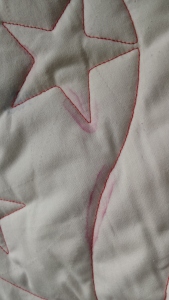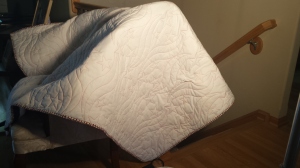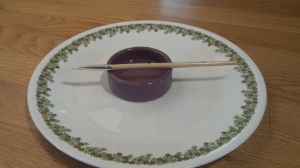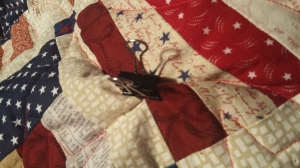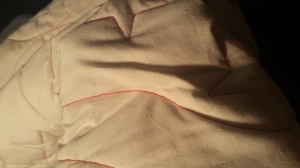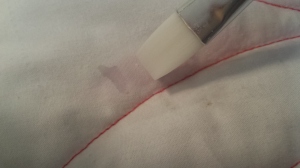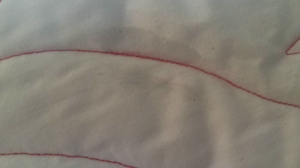I haven’t had a problem with red dye running since the early 80’s. The clothing industry figured out that people wanted a hassle free way to have red clothes. Problem solved.
What changed? I call it the “purity movement.” Folks are looking to eliminate fake ingredients in their food, their pets’ food, their cosmetics, and well, everything. Surrounded by environmental toxins, it is comforting to know we can take steps to reduce risk of illness and allergic reactions.
And that is where the new vegetable dye fabrics come in.
Great idea. Let the buyer beware!
If you shop for fabric like I do, you grab the bolts carrying the looks that will be perfect for your project. As the commercial reminds us, “If you’re a quilter, it’s what you do.” In a quilt shop, you don’t even check to eliminate poly blends. You know that you know that you know it is 100% cotton.
Well, from now on, you must. The vegetable dyed fabric is out there, and it is beautiful. Rich, saturated reds and blues. and other hues. Yummy stuff.
Read the label. Ask the person cutting your goods. It’s not that anyone is trying to hide anything. You know how it goes. Lots of people in the shop. Lots of talking about quilting. It just gets forgotten. So be sure to ask. Because as the industry works, there is no label on the goods when you leave the store. You must get the information while you are there so you will know what to do next.
Let’s talk about setting dye. Then the solution if you have the problem.
It is quite fitting that vegetable dye is set with salt and vinegar.
Instructions
- To colorfast dyed or colored material so the dye won’t run,
into bucket add:
1/4 cup salt
1 cup vinegar
1-2 gallons cold water - Place one garment in the solution and swish around gently, dissolving the salt and making sure the entire garment is wet through. This will set the color so the color won’t run.
- Let sit, swishing the material around gently by hand whenever you pass by (every few hours so during the day). The colorfast process is quite hands off.
- After about 24 hours, lift the garment out, squeezing gently so that excess solution falls back into the bucket. Rinse the garment, cloth, rug or item you are colorfasting thoroughly until the cold water solution runs clear and is free of dyes. When the water runs clear, you can safely wash the item in your regular laundry.
- If dyes remain after many (10 or so) rinses under cold running water, repeat the colorfasting process (steps 1-4) before washing it in your regular laundry.
Read more : http://www.ehow.com/how_5210690_colorfast-clothing.html
One more step: Add 1 cup of vinegar to the rinse cycle. Vinegar is the “icing on the cake” in this process.
All fine and good. But what if this has happened to you? Notice in the photos that the bleeding occurred where water came in contact a dye that runs and was transferred by the connecting thread. In other words, the colorfast thread (the thread in this case is also red but does not bleed) acted as a wick to carry the excess color to the quilt back.
We were able to eliminate the stain caused in this case. Credit to my meticulous, problem solving genius husband, Tom.
This process takes patience. We were working with a white back, so that was in our favor.
The tools used were a fine paintbrush, an alligator clip, a solution of 50/50 bleach and water, and a place to hang the quilt. If you do this on a flat surface, you run the risk of bringing more of the dye from the opposite side of the quilt.

Barely dip the brush into the bleach/water solution and touch the brush lightly to the quilt surface.
If your backing fabric is not white, you will have to test the fabric with the bleach/water solution to determine whether it significantly changes its color. The other solution is to “unquilt” the piece and use the colorfast process above to set the quilt top.
This quilt is not out of the woods yet, either. The dye on the front of the quilt has not changed. Its owner will have to decide whether to wash the quilt and let nature take its course. Perhaps the decision will be to use it as a wall hanging. The colorfast process could be done taking care to keep the back and front separated using clips.
The quilt owner is a prolific quilter, patronizing several shops to get the widest selection of fabrics. She hopes to remember the supplier of this fabric to let them be sure to warn others. The silver lining in this cloud is that the problem was discovered before the quilt was offered for sale. And, now you also know. Get the fabrics you love without getting problems you don’t!
Happy quilting.


